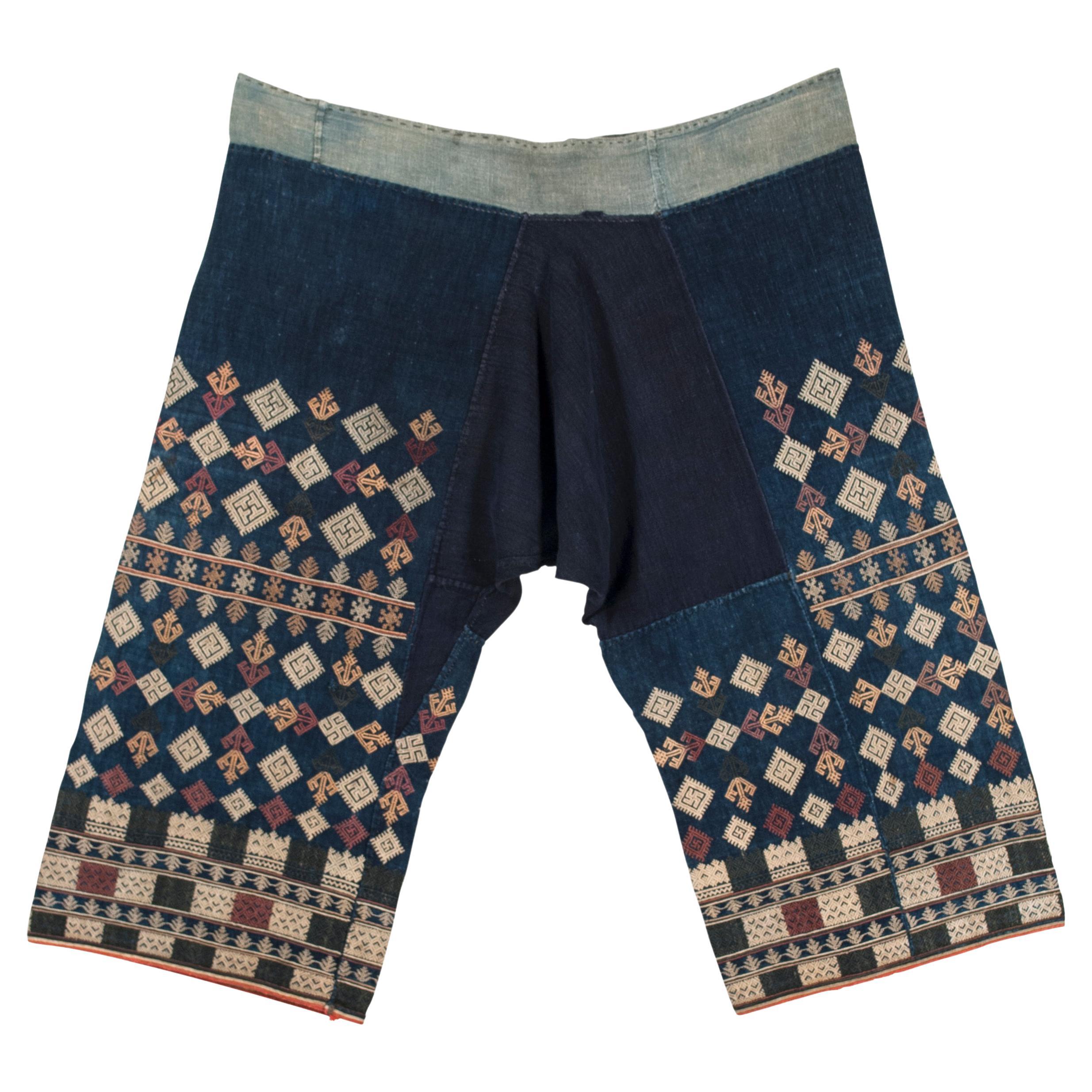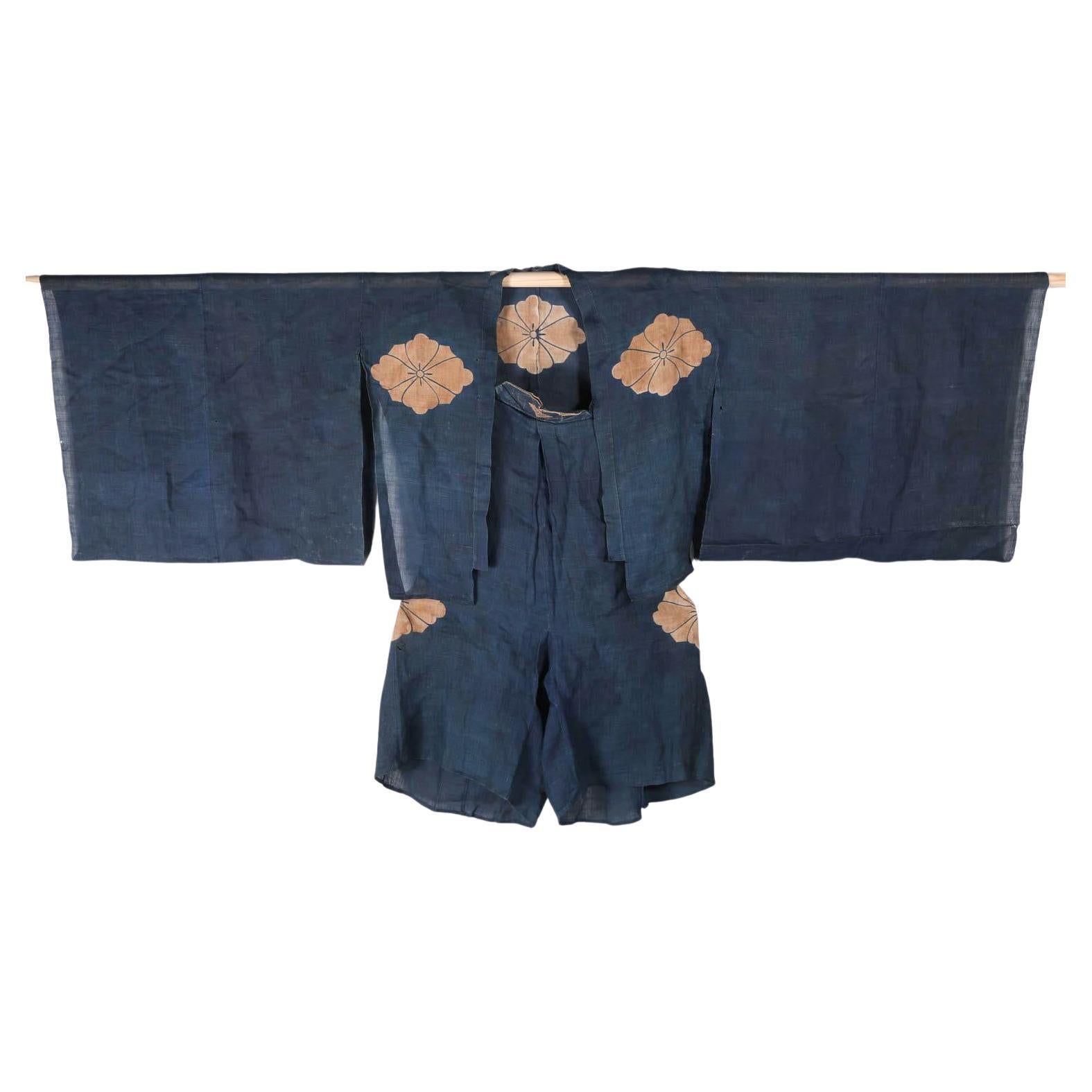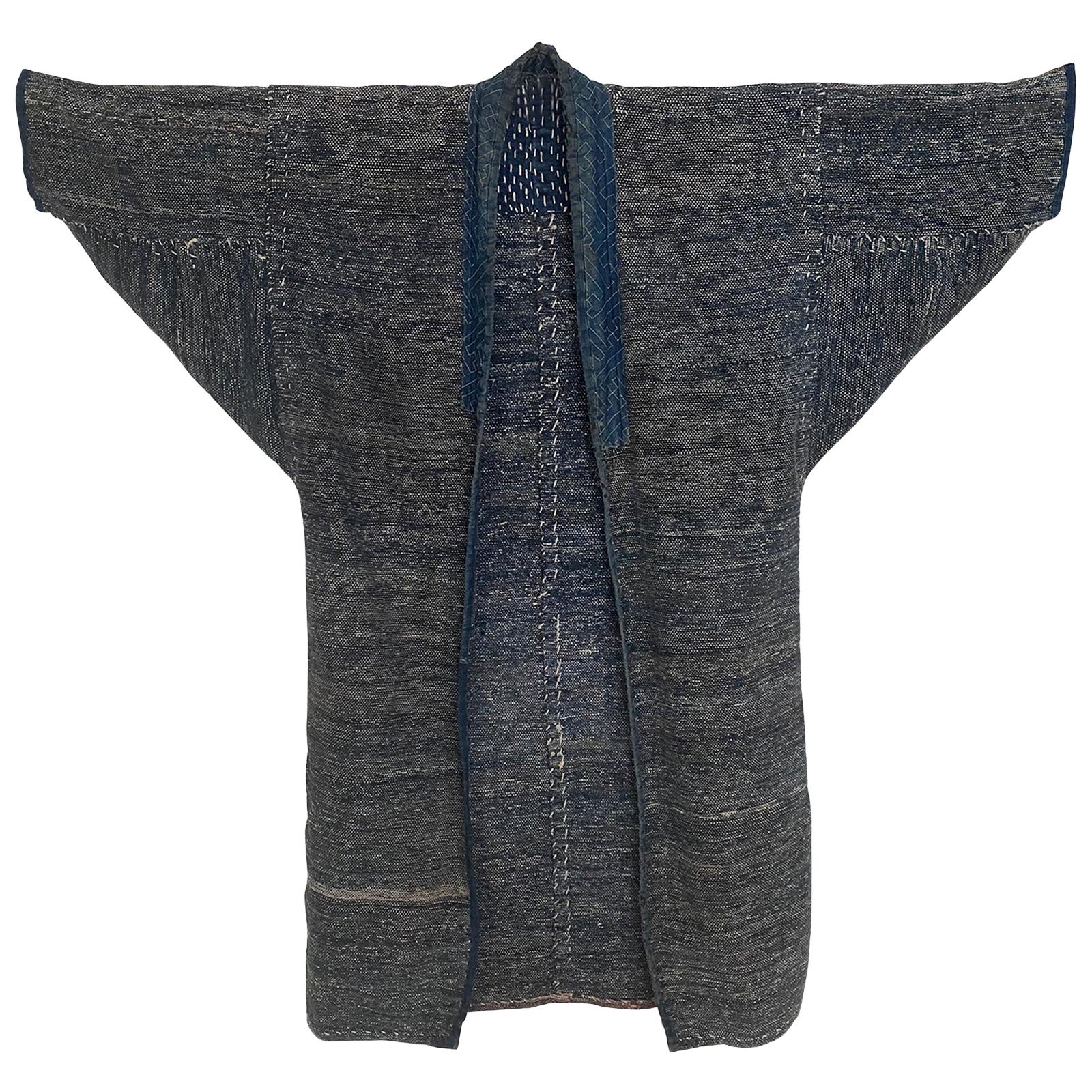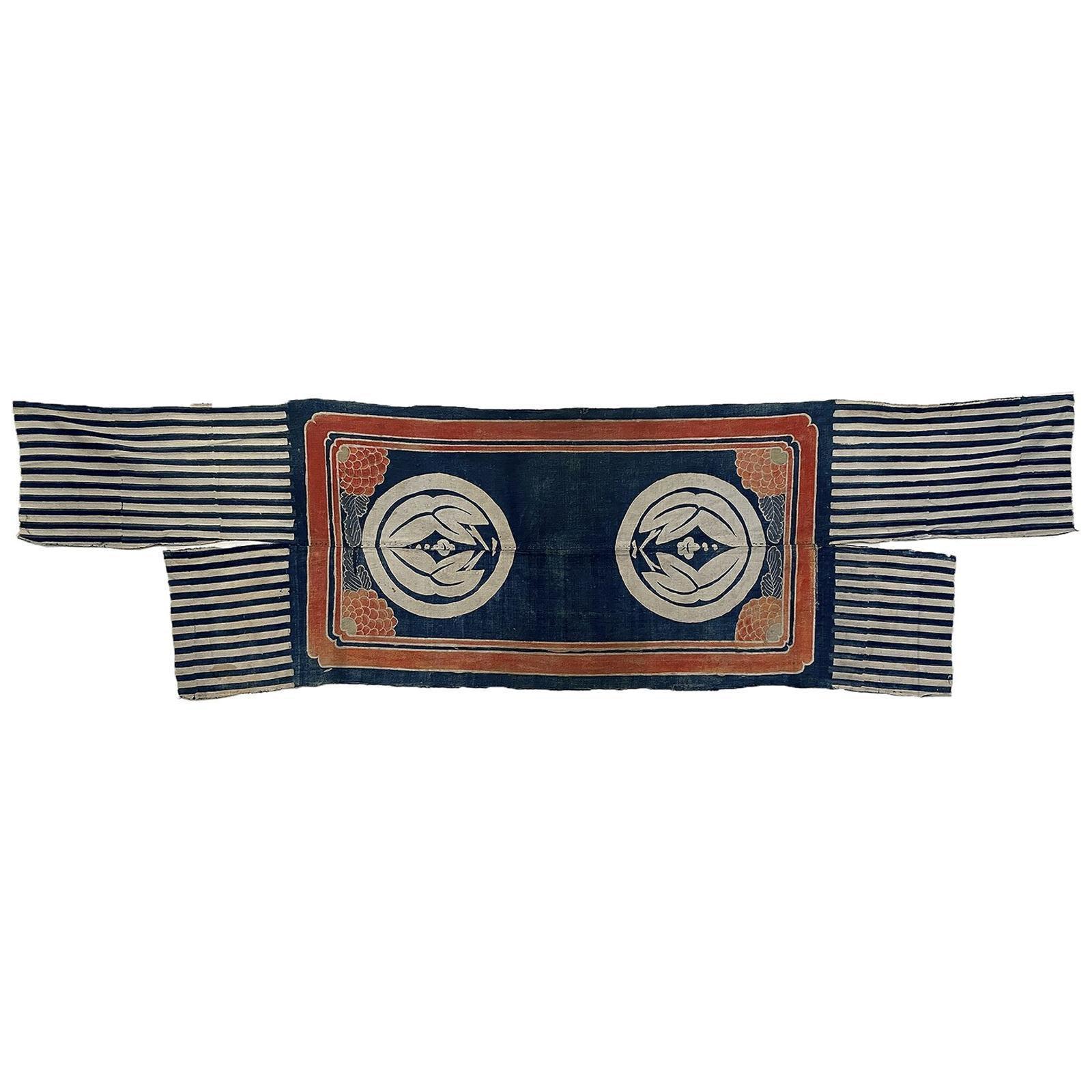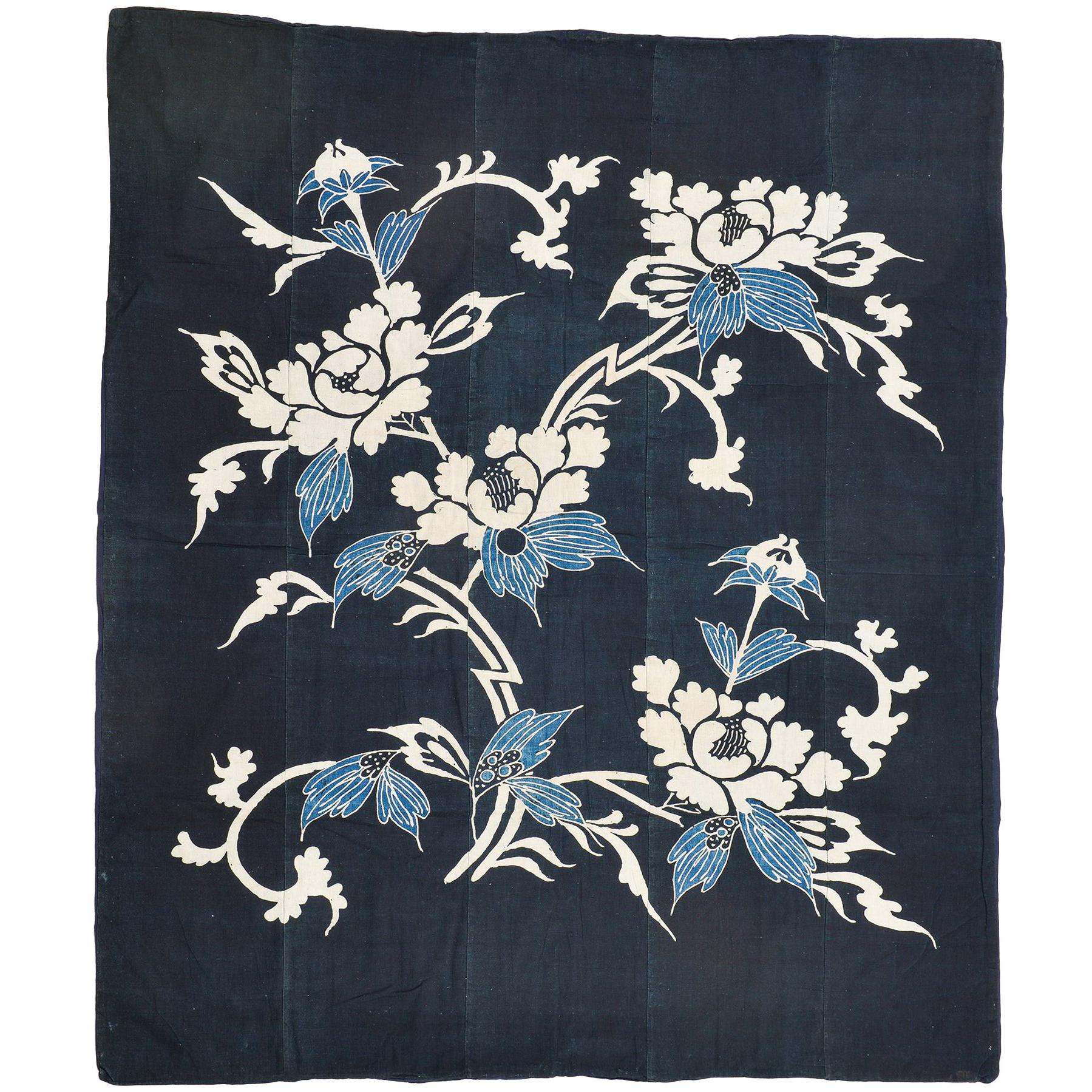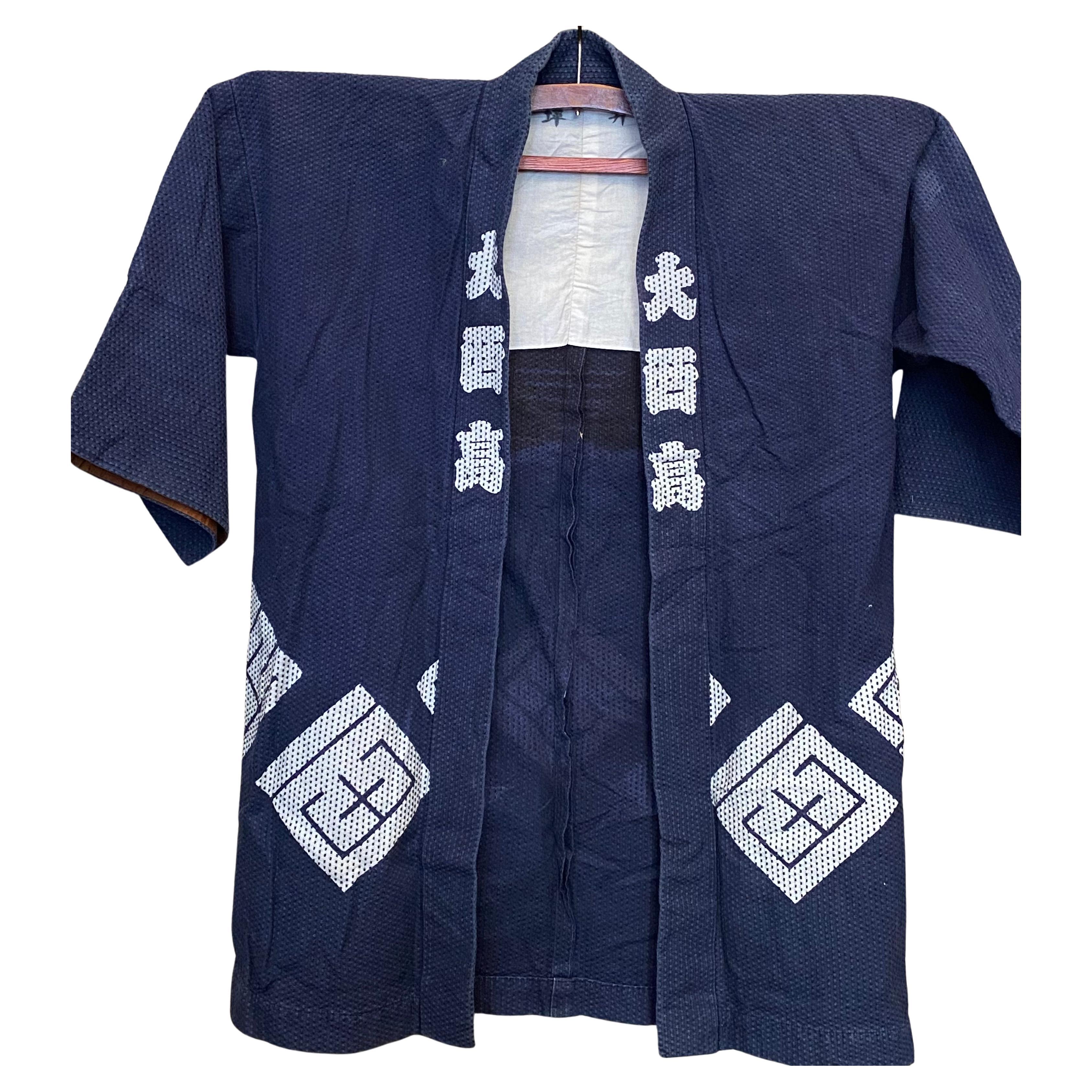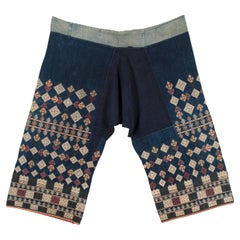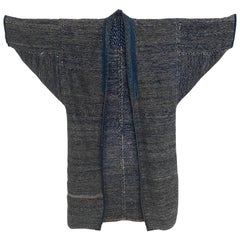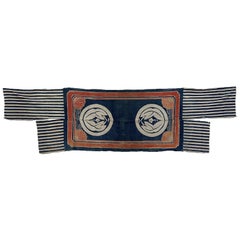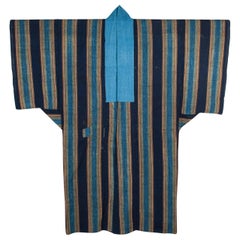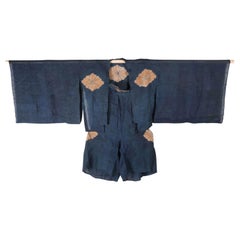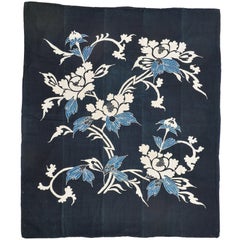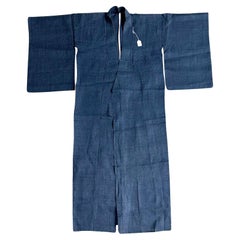Items Similar to Antique Japanese Farmer's Pants, Indigo, Cotton, Meiji
Want more images or videos?
Request additional images or videos from the seller
1 of 10
Antique Japanese Farmer's Pants, Indigo, Cotton, Meiji
$875
£663.93
€759.14
CA$1,222.14
A$1,358.85
CHF 709.52
MX$16,540.52
NOK 9,053.13
SEK 8,482.35
DKK 5,665.63
Shipping
Retrieving quote...The 1stDibs Promise:
Authenticity Guarantee,
Money-Back Guarantee,
24-Hour Cancellation
About the Item
Japanese farmer’s indigo cotton pants. Woven and dyed cotton, worn by farmers working in the field. Narrow legs and ties around the waist. As shown, the pants have been well used and well cared for. Most likely made and woven by the person who wore them, as the pattern is unique and personal.
Waist measures 16.5" (taken flat) and the leg has a 24" inseam with a total length of 36"
- Dimensions:Height: 36 in (91.44 cm)Width: 16.5 in (41.91 cm)Depth: 13 in (33.02 cm)
- Style:Meiji (Of the Period)
- Materials and Techniques:Cotton,Dyed
- Place of Origin:
- Period:
- Date of Manufacture:20th Century
- Condition:Wear consistent with age and use.
- Seller Location:Point Richmond, CA
- Reference Number:Seller: GU-RM23101stDibs: LU1778244496792
About the Seller
5.0
Platinum Seller
Premium sellers with a 4.7+ rating and 24-hour response times
Established in 1999
1stDibs seller since 2015
687 sales on 1stDibs
Typical response time: 2 hours
- ShippingRetrieving quote...Shipping from: Point Richmond, CA
- Return Policy
Authenticity Guarantee
In the unlikely event there’s an issue with an item’s authenticity, contact us within 1 year for a full refund. DetailsMoney-Back Guarantee
If your item is not as described, is damaged in transit, or does not arrive, contact us within 7 days for a full refund. Details24-Hour Cancellation
You have a 24-hour grace period in which to reconsider your purchase, with no questions asked.Vetted Professional Sellers
Our world-class sellers must adhere to strict standards for service and quality, maintaining the integrity of our listings.Price-Match Guarantee
If you find that a seller listed the same item for a lower price elsewhere, we’ll match it.Trusted Global Delivery
Our best-in-class carrier network provides specialized shipping options worldwide, including custom delivery.More From This Seller
View AllMid 20th Century Yao Group Embroidered Pants
Located in Point Richmond, CA
Mid 20th century Yao Group embroidered pants
The muted earth tones of the patterns on these embroidered pants are typical of the work done by the ...
Category
Mid-20th Century Laotian Tribal Textiles
Materials
Silk, Cotton
Saki-Ori Farmers Coat, Northern Japan, Meiji Period
Located in Point Richmond, CA
Saki-ori farmers coat, Northern Japan, Meiji period
A very heavy and substantial saki-ori coat, made of cotton with an indigo kasuri lapel. Several patches of hand sewn stitching ...
Category
20th Century Japanese Meiji Textiles
Materials
Cotton
Japanese Horse Trapping, "Uma-No-Haragake", Tsutsugaki, Cotton, Meiji Period
Located in Point Richmond, CA
Japanese horse trapping, "Uma-No-Haragake", Tsutsugaki, cotton, Meiji period
This type of haragake is called yuiage ("tied up"). The central portion covered the belly of the horse an...
Category
20th Century Japanese Meiji Textiles
Materials
Cotton
Late Meiji Period Sleeping Kimono / Yogi, Japan
Located in Point Richmond, CA
Late Meiji Period sleeping Kimono / Yogi, Japan
Yogi are a type of oversized sleeping kimono traditionally used in Japan. This kimono would have b...
Category
Early 20th Century Japanese Tribal Textiles
Materials
Cotton
Antique Japanese Recycled Zanshiori Jacket
Located in Point Richmond, CA
Antique Japanese Recycled Zanshiori Jacket
Zanshi-ori cloth is woven from leftover cotton and silk threads, either from commercial kimono production or from home-produced recycled y...
Category
Early 20th Century Japanese Taisho Tribal Art
Materials
Cotton, Silk
Antique Japanese Indigo-Dyed Double Ikat Futon Cover
Located in Point Richmond, CA
Antique Japanese Indigo-Dyed Double Ikat Futon Cover
This early 20th century hand-spun cotton futon cover displays a pattern of scattered ‘well-head’ motifs across a deep indigo fie...
Category
Early 20th Century Japanese Taisho Tribal Art
Materials
Cotton
You May Also Like
Japanese Two-Piece Indigo Asa Kyogen Festival Costume Meiji Period
Located in Atlanta, GA
A two-piece Japanese festival costume based on Kyogen theater performance circa late 19th century (Meiji Period). The matching assemble consists of an oversize jacket (Suo) and a pai...
Category
Early 20th Century Japanese Meiji Textiles
Materials
Linen
Japanese Indigo Antique Boro Futon Cover or Wall Panel
Located in Alessandria, Piemonte
Rare perfect antique collection Japanese Indigo Boro Futon cover : also to use.
The rare antique boros are now valued as pieces of art, therefore they are...
Category
Mid-20th Century Japanese Japonisme Textiles
Materials
Cotton
$2,494 Sale Price
35% Off
Japanese Antique Hanten "Onishiko" with Cotton showa (around 1960s)
Located in Paris, FR
Hanten is a type of traditional Japanese garment that is often referred to as a "short coat" or "jacket". `it has a loose, kimono-like design with a straight collar and is typically ...
Category
Vintage 1960s Japanese Antiquities
Materials
Cotton
Japanese Woven Asa Double Ikat Summer Usumono Kimono Provenance
Located in Atlanta, GA
A “Natsu No Kimono” (summer kimono) also called “Usumono" (thin clothes) dated from early 20th century Taisho Period. This well-preserved garment was tailored from a woven indigo blu...
Category
Early 20th Century Japanese Taisho Textiles
Materials
Hemp
Japanese Woven Asa Double Ikat Summer Usumono Kimono Provenance
Located in Atlanta, GA
A “Natsu No Kimono” (summer kimono) also called “Usumono" (thin clothes) dated from early 20th century Taisho Period. This well-preserved garment was tailored from a woven indigo blu...
Category
Early 20th Century Japanese Taisho Textiles
Materials
Linen
Japanese Woven Linen Kimono with Katazome Stencil Dyes
Located in Atlanta, GA
On offer is a Japanese summer kimono woven from indigo blue linen with ivory color fine stripes patterns with apparently darker weft additions. The elega...
Category
Early 20th Century Japanese Japonisme Textiles
Materials
Linen
More Ways To Browse
Indigo Art
Japanese Indigo Textile
Antique Japanese Indigo
Ikat Indonesia
Indonesian Ikat
Vintage Silk Embroidered Fabric
Japanese Tassel
Indonesian Ikat Textiles
Chinese Embroidered Panel
Japanese Silk Obi
Antique Indonesian Textiles
Antique Silk Fan
Chinese Giltwood Panel
Chinese Silk Embroidered Panel
Chinoiserie Embroidery
Qing Embroidery
Antique Japanese Indigo
Moorish Caftan
